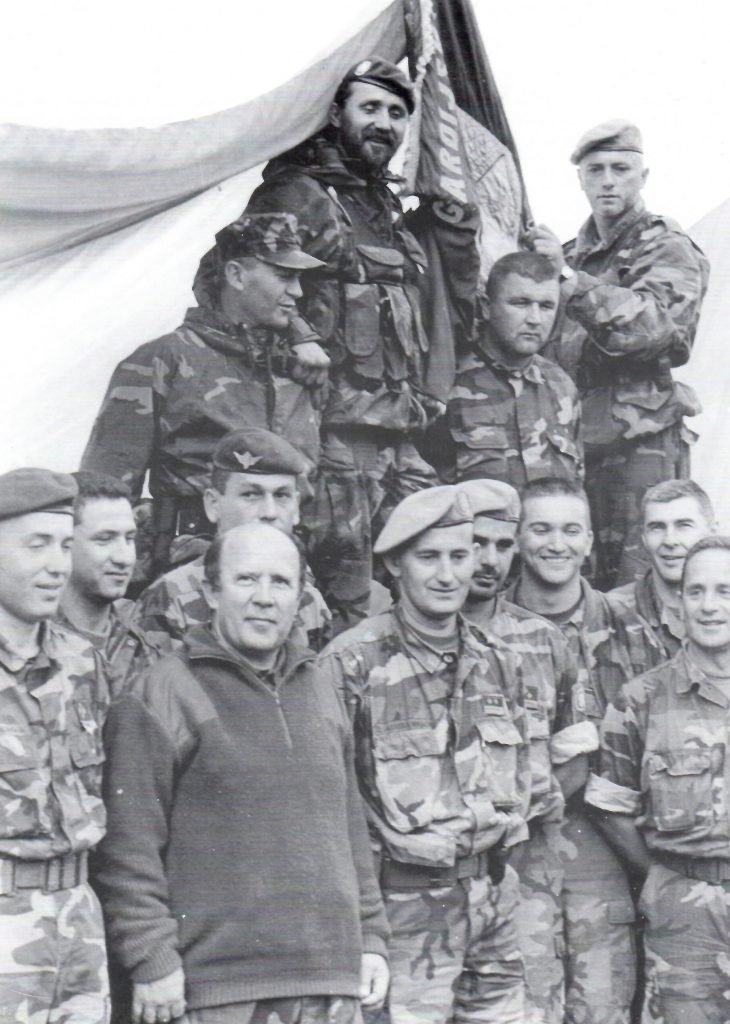On this day in 1995, the towns of Jajce and Donji Vakuf were liberated from occupation by the Serbian army as part of Operation “MAESTRAL”.

After Operation “STORM” liberated a large part of Croatian territory and broke the Serb uprising in Croatia, the end of the war in Bosnia and Herzegovina was in sight. As a result of the Washington and Split Agreements, the Croatian Army joined in the liberation of neighboring Bosnia-Herzegovina (BiH) at the invitation of its leadership. Croatian assistance was crucial since the forces of the BiH Army and the Croatian Defense Council (CDC) did not have the strength to launch major operations on their own.
One month after the end of Operation “STORM”, the Croatian Army under the command of General Ante Gotovina launched Operation “MAESTRAL” on 8 September 1995 as NATO simultaneously bombed Serb positions. It was the first significant operation in Bosnia and Herzegovina between the joint forces of the Croatian Army, CDC and the BiH Army and liberated a large portion of western Bosnia that was under Serbian occupation.

Operation “MAESTRAL” was actually comprised of two related offensives. The first saw Croatian forces led by the 7th and 4th Guard Brigades of the Croatian Army launch an attack from Glamoč and Kupres; The second had the 5th Corps of the Army of BiH move from Bihać towards Bosanska Krupa via the Grmeč and Bosanski Petrovac mountains while the 7th Corps of the BiH Army launched an attack on Donji Vakuf.
The most significant day of the operation most certainly was 13 September 1995. The zenith of Operation “MAESTRAL” was the liberation of the historic royal city of Jajce that had been occupied for 1,049 days. Indeed, the Croatian flag being raised atop the old fortress in Jajce following Operation “MAESTRAL” had the same meaning as when the flag was raised on the Knin Fortress after Operation “STORM”. Croatian Defence Council units led by the 2nd CDC Guard Brigade, Special Police of the Ministry of the Interior of the Croatian Republic of Herceg-Bosna (CRHB) and the 81st Guard “Godfathers” Battalion of the Croatian Army from Virovitica played a significant role in this undertaking.

By the end of the day, Croatian forces had broken out south of Mrkonjić Grad into the village of Barevo on the Vrbas River and east of Jajce on the Ugar River. This created more space around Jajce and Šipovo and Serb forces were forced to retreat towards Mrkonjić Grad which was liberated a month later in Operation “SOUTHERN MOVE”.
Cover photo – members of the 81st Guards Battalion “Godfathers” in front of Jajce
Sources
Gotovina, Ante. Napadajni bojevi i operacije HV i HVO (hrvatskih snaga). Split: Zapovjedništvo zbornog područja Split, 1996
Marijan, Davor. Osnivanje i ratni put 81. samostalne gardijske bojne Hrvatske vojske iz Virovitice. Zagreb: HVIDR-a RH, 81. SAMOSTALNA GARDIJSKA BOJNA, 2019
Monograph 4. gardijska brigada Hrvatske vojske Pauci” Zagreb : Despot infinitus, 2013
Graduated with a Master’s Degree in History from the University of Zagreb. He has worked at the Croatian History Museum and as a researcher for the popular TV Calendar program for Croatian Radio and Television. He has authored several books and documentaries about Croatia’s Homeland War and is the creator/producer of the immensely popular “It Happened on this Day – Homeland War” Facebook page as well as the online portal Domovinskirat.hr. Borna also is the host and editor of the daily segment “Patriotic Minutes” on Croatian Catholic Radio. He created CroHis to promote the values of the Homeland War and ensure that the sacrifices of those who defended Croatia’s independence would not be forgotten.

